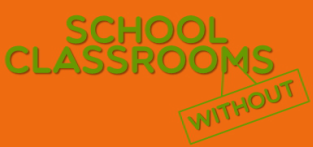Business Model
Let´s start with our Customer Segments which represent a multi-sided platform. On the one hand the "direct“ costumers who are the users of the intergenerational learning space like children, adults, retired people and on the other hand the "indirect“ customers who are a priori supporters, sponsors and multipliers in cooperation.
The value we create for our "direct“ customers is in establishing a New Education Culture for the 21st Century, in providing guidelines for Green Buildings and in revitalizing and converting buildings, to foster significant places for the community with intensive cultural and social activity.
The value for our "indirect“ customers is in obtaining acceptance for social engagement and for the readiness to invest in our future.
What we exactly do?
In which way we interact with our Costumers? Our relationships are affected by direct dialogue and involvement with our Costumers. Aspects like Co-Creation, Community-Centered and Personal Assistance are the base for developing the pilots for intergenerational learning.
How we communicate with our Costumers? The mobile Center for Sustainable Community Education plays the main role regarding to our communication concept. I.e. workshops, Open Spaces, lectures, exhibitions open-minded the stakeholders and visitors to discuss and develop different concepts for intergenerational learning spaces and sensitise them for the idea.
Furthermore we communicate with our Costumers by using the distribution channels of our multiplicators.
Our physical assets are buildings for partial conversion and rehabilitation, green mobile and modular furnitures, Information and Communication Technologies (Old Devices) and the green mobile architecture for the Center for Sustainable Community Education. The intellectual asset is the expertise in: Bioclimatic Design, Environmental Design based on the concepts of The Third Teacher and Learning Theories and Methods.
The human assets are teams for realization and running the Mobile Center for Sustainable Education, for development and realization of the pilot and for running the pilot.
Most of the cash our business model produces, would be generated by strategic partnerships with the “indirect” customer segment based on a hybrid funding model. In addition we generate income on the one hand, through workshops and trainings, consulting service, lectures and vending guidelines, and on the other hand through orders for Environmental Design and fees for temporarily renting and events.
The emphasis of our Key Partners lies on institutions for education like museums, libraries and schools. In addition we concentrate on real estate agents, Home for Elderly and Community Centers. Our Key Suppliers are neighbours, private people, economy, politics and supporters.
Our most important costs are for Human Resources, for Implementation costs for the pilot and for realization and running costs for the mobile Center for Sustainable Community Education.
We developed our Business Model for school without classrooms, on the base of the Business Model Canvas.
The value we create for our "direct“ customers is in establishing a New Education Culture for the 21st Century, in providing guidelines for Green Buildings and in revitalizing and converting buildings, to foster significant places for the community with intensive cultural and social activity.
The value for our "indirect“ customers is in obtaining acceptance for social engagement and for the readiness to invest in our future.
What we exactly do?
- We establish a mobile Center for Sustainable Community Education to spread the idea.
- We develop and realize pilots of intergenerational learning spaces with different communities.
- We develop and realize different guidelines for intergenerational learning spaces due to the direct communities.
- We provide an Internet-Platform for discussing 21st century school designs and learning concepts.
- We do trainings in Learning Theories, Architecture and Design and Technology for Education.
- We manage the knowledge, which is worked out.
In which way we interact with our Costumers? Our relationships are affected by direct dialogue and involvement with our Costumers. Aspects like Co-Creation, Community-Centered and Personal Assistance are the base for developing the pilots for intergenerational learning.
How we communicate with our Costumers? The mobile Center for Sustainable Community Education plays the main role regarding to our communication concept. I.e. workshops, Open Spaces, lectures, exhibitions open-minded the stakeholders and visitors to discuss and develop different concepts for intergenerational learning spaces and sensitise them for the idea.
Furthermore we communicate with our Costumers by using the distribution channels of our multiplicators.
Our physical assets are buildings for partial conversion and rehabilitation, green mobile and modular furnitures, Information and Communication Technologies (Old Devices) and the green mobile architecture for the Center for Sustainable Community Education. The intellectual asset is the expertise in: Bioclimatic Design, Environmental Design based on the concepts of The Third Teacher and Learning Theories and Methods.
The human assets are teams for realization and running the Mobile Center for Sustainable Education, for development and realization of the pilot and for running the pilot.
Most of the cash our business model produces, would be generated by strategic partnerships with the “indirect” customer segment based on a hybrid funding model. In addition we generate income on the one hand, through workshops and trainings, consulting service, lectures and vending guidelines, and on the other hand through orders for Environmental Design and fees for temporarily renting and events.
The emphasis of our Key Partners lies on institutions for education like museums, libraries and schools. In addition we concentrate on real estate agents, Home for Elderly and Community Centers. Our Key Suppliers are neighbours, private people, economy, politics and supporters.
Our most important costs are for Human Resources, for Implementation costs for the pilot and for realization and running costs for the mobile Center for Sustainable Community Education.
We developed our Business Model for school without classrooms, on the base of the Business Model Canvas.

